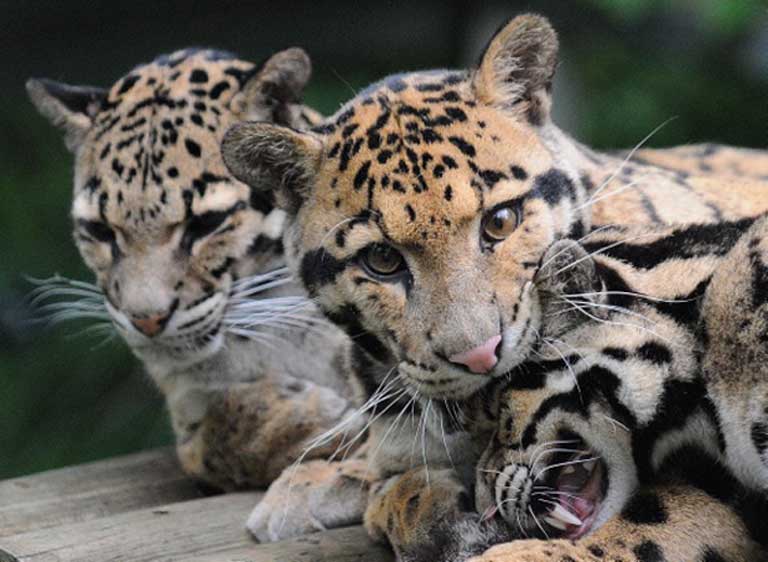- The clouded leopard is not closely related to the leopard, but has its own genus (Neofelis), separate from the big cats (Panthera). In 2006, the single species of clouded leopard was split in two: Neofelis nebulosa is found on the Asian mainland, while Neofelis diardi, the Sunda clouded leopard, occurs only on the islands of Sumatra and Borneo.
- Another subspecies native to Taiwan (Neofelis nebulosa brachyura) is believed to be extinct, after none were found in a camera trapping survey conducted between 1997 and 2012.
- Originally, researchers found it difficult to breed the animals in captivity, since mates tended to kill each other. A variety of breeding techniques have however allowed zoos around the world to begin mating the animals successfully, to create and maintain a genetically viable captive population.
- Clouded leopards are incredibly elusive, and only with the advent of new technology, including camera traps and radio collars, have scientists been able to begin defining clouded leopard ranges, distribution, populations and threats. Public outreach is also helping build awareness around the plight of these Vulnerable wild cats.
-

A clouded leopard in a treetop perch. The Asian species is arboreal, and well known for its climbing abilities. Photo by Bill Wood courtesy of the Clouded Leopard Consortium in Thailand If quizzed on what we know about Asia’s clouded leopard, most of us would be stumped. But ask an expert who works with these wild cats, and you’ll get an earful. “They are phenomenal athletes. They can climb like no cat I’ve ever seen. They can hang from one paw; hang upside down. I have seen them do stuff that is just amazing!” exclaims Bonnie Breitbeil, the Clouded Leopard SSP Coordinator and International Studbook Keeper for the Association of Zoos and Aquariums (AZA).
The animal is beautifully marked and has fascinating adaptations to suit its arboreal lifestyle: “It can go down headfirst down a tree — only a few cats in the whole kingdom can do that,” notes Lon Grassman, one of the first researchers to trap and radio collar a wild clouded leopard. “They have rotating ankles,” he adds. They also have very long teeth compared to the size of the head, prompting some to call them modern-day saber tooth cats. “Evidence suggests that their super-long teeth help them grasp prey up in the trees where they can’t use their paws to help,” he says.
And while Breitbeil gets all technical around it when she calls these felines paedomorphic, what it comes down to is this: to us humans, clouded leopards simply look adorable. “They still look very young when they’re older,” she explains. “The shape of their faces and their ears still have that babyish look.”
Clouded Leopard SSP Education Advisor Karen Povey, who works at Tacoma, Washington’s Point Defiance Zoo & Aquarium, recalls the first time she met one. “None of us had ever worked with a clouded leopard before and we were instantly charmed by him,” she says. “Everyone was smitten.”

Clouded leopards generally trigger the “adorable” response in humans. Here a healthy trio in captivity: male and female parents, plus their female cub. They were all were reared at a private facility in France. Photo by Thierry Plaud